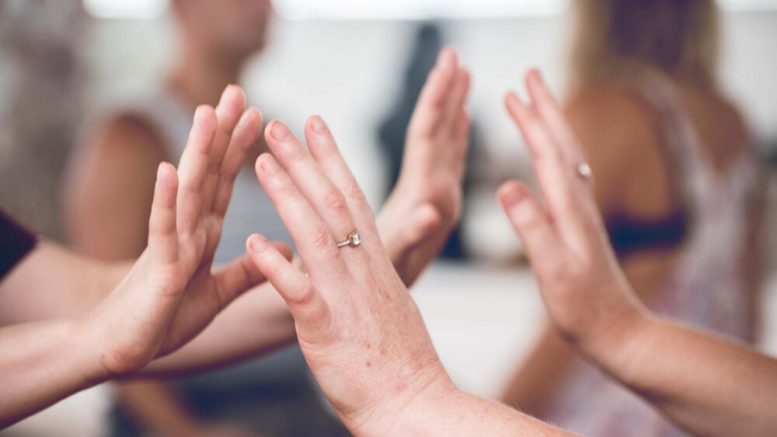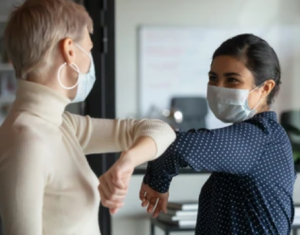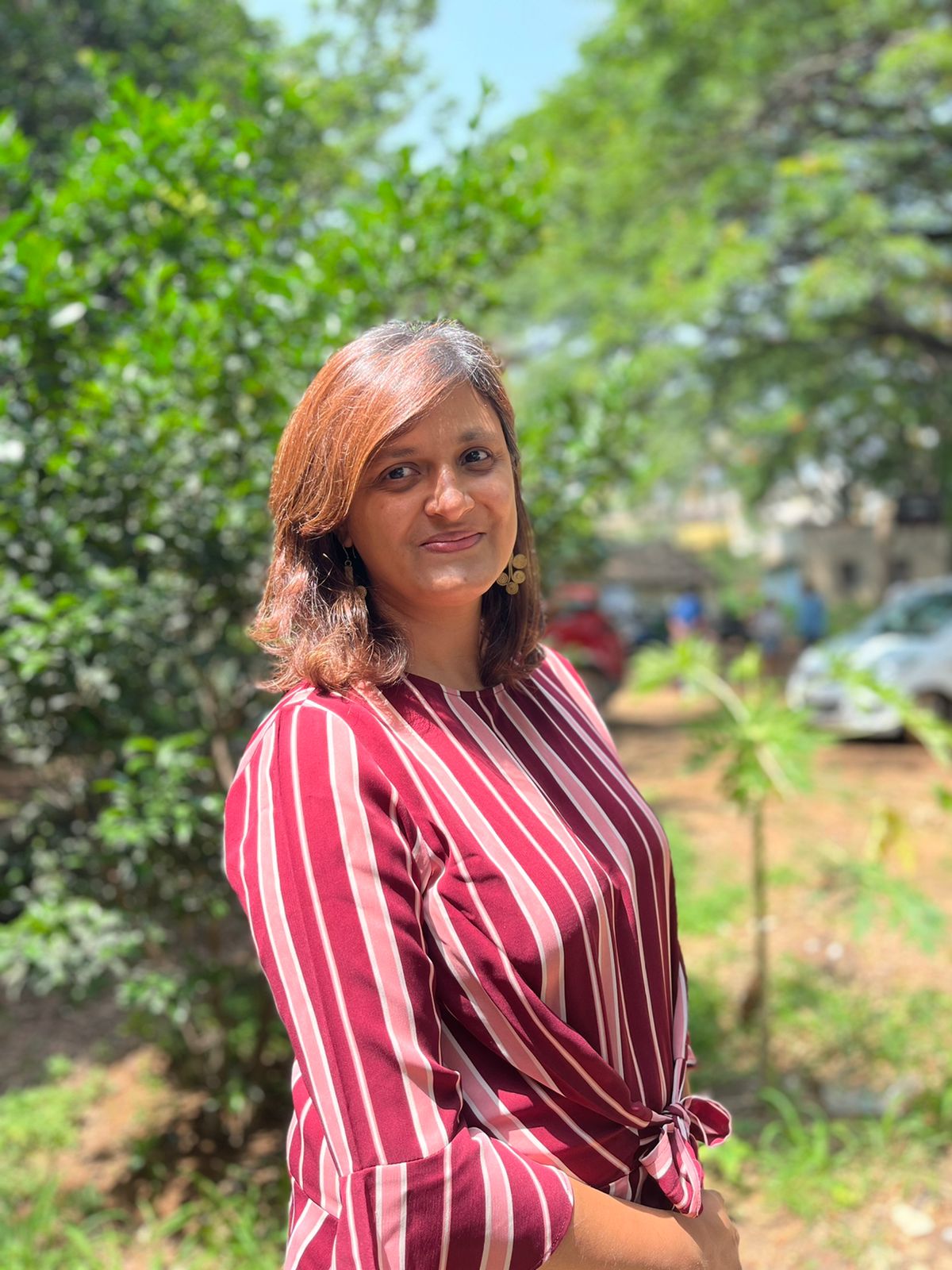The age-old proverb is true, a picture is worth a thousand words. As writers, we know how tough it can be to communicate a well-thought argument, or convey a positive sentiment, even with a 1000 words. And as communicators, we know that attention spans have shrunk. Using visuals is a must in any communication, and to emote, there have to be people – this we know. 
Still, it’s not an image of any person that communicates and connects. Some work better than others, and we don’t really know why. Have you seen the girl in the blue polka dot top? I’m willing to bet you have all seen this girl. In fact, if I had a dollar for every time I saw her in a poster, mailer, or advertisement, I would be rich.
| Here she is listening to a colleague
|
Making a presentation
|
| Following Covid-29 protocols
|
Getting coffee
|
In fact, even in a standard lineup, you are drawn to her.
What makes the girl in the blue polka dot top the choice of image every time? Many of us aren’t artists, with a known set of aesthetic parameters based on which we choose an image. We don’t look at colour palates, composition, headroom, lighting, colour temperatures etc. We look at a bunch of images, based on the effect we want to have on our audience, and then lean towards the one that speaks to us. This is an intangible instinct.
This image keeps getting chosen, without any influencing factors – she isn’t famous. We don’t know who she is. There have been no widely acclaimed reviews about her as a model, or with regard to skilled photography. She isn’t breathtakingly beautiful, nor are her clothes particularly stylish. She isn’t the tallest or the senior-most person in the room. When I think about why this image has come to resonate with the working world today, it could be many factors. It speaks of youth, collaboration, teamwork, confidence, diversity, friendship, and fun. It could be that navy blue takes us back to a place of safety and security, with polka dots adding a sense of fun and cheerfulness. It could be that the contrast of the polka dots against the pastels and solid shades of the others in the photos make her stand out.
But, I don’t think these are the reasons that photos with the girl in the blue polka top make it to internal coms posters and mailers, advertising, websites, and other marketing collateral. In every one of her photos, you get the feeling that she is making a real human connection. Her eyes are intent, looking at the camera or the colleague in the photo, and her smile is genuine; it lights up her face. Her body language is open and confident, yet comfortable, saying to everyone, “I love who I am. I am interested in what you have to say. I want to be your friend and you can trust me. I’m not here to compete with you; I love my job and want to work with you.”
That’s why we see her everywhere, in a time where making human connections is difficult even to do in person, the girl in the blue polka dot top does this through her photos.
I’d like to think there’s a lesson here – for us as people longing to connect, and for communicators who wonder about how to get the right image. It’s not what we say or think, it’s that a genuine nature shines through. Connection is not only based on interest, audience profiling, or algorithms, there is a deeper, more instinctual aspect that we need to tap into.
Girl in the blue polka dot top, who are you?
The views and opinions published here belong to the author and do not necessarily reflect the views and opinions of the publisher.







Be the first to comment on "The girl with the polka dot top"